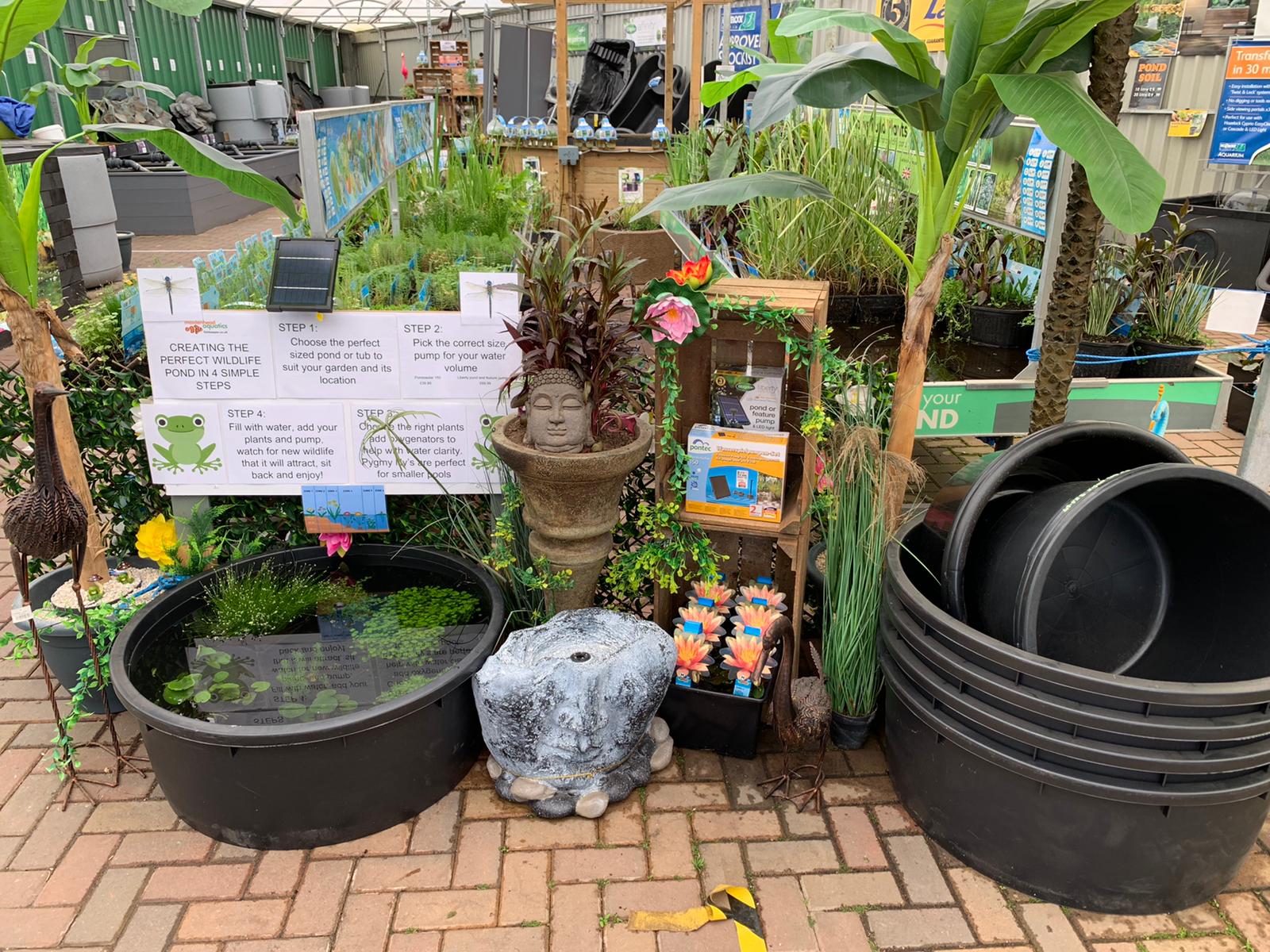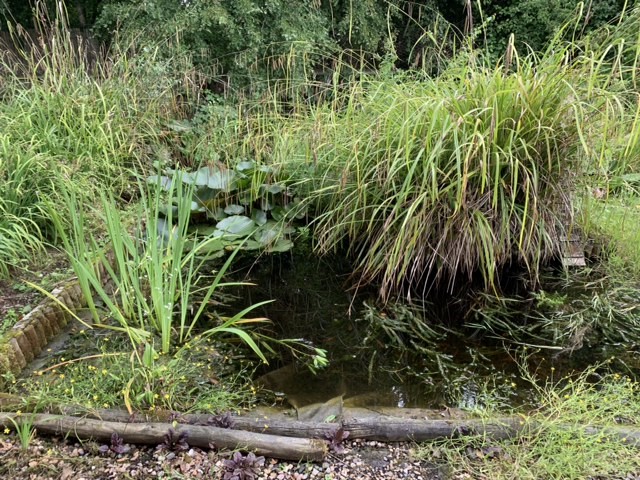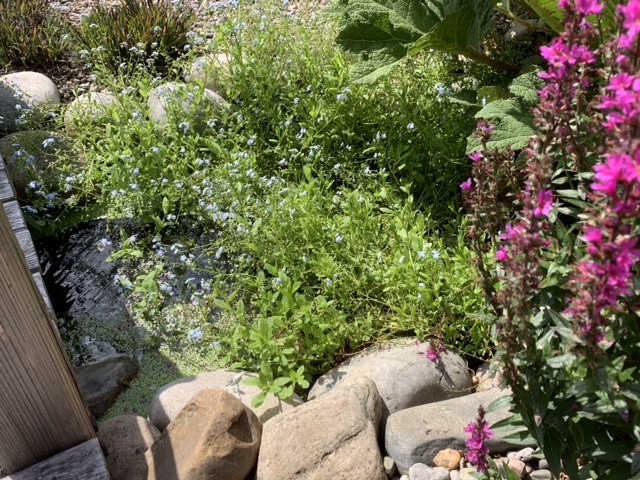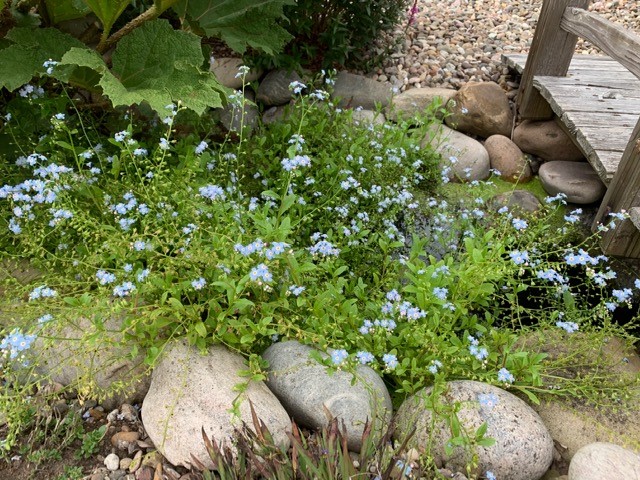Go Wild in the Garden
The past few months have really shown us the healing power of nature and just how readily our wild neighbours can enrich our lives by sharing our outdoor space. Indeed, choosing to add a water feature to your garden will open your eyes to another world. Every garden benefits from a water feature and even the smallest pond can attract wildlife - such is the power of water that a recent campaign by Chris Packham saw thousands of locked-down nature lovers installing old washing up bowls in their gardens to make space for the creatures that only need a suitable invitation to move in.
With limitations on travel and the world currently upside down, there’s never been a better time to bring the world to you instead…

Although many animals will visit a variety of water features, a well-designed wildlife pond will attract a wide range of native creatures and enable them to thrive and reproduce, to the benefit of both garden and gardener. Frogs and Toads will help control Slugs and Snails, Dragonflies have a hearty appetite for Mosquitoes and other flying-insects and garden birds will benefit from somewhere to drink and bathe. As a child, I spent hours staring into this world of hydras, water boatmen, tadpoles and strange silvery beetles and I’m sure my parents enjoyed the peace and quiet that this gave them. That’s the real secret of water gardening - the benefits expand like ripples, even to those who are indirectly affected.
Well-designed wildlife ponds should have easy access for small animals and shallow areas for bathing and drinking. When using a liner, a shallow bowl-shaped cross-section is ideal, with a depth of 60cm/24” adequate for overwintering life if you’re doing things on a larger scale. Species such as Toads and the legally protected Great Crested newt favour such deeper ponds and can be hard to tempt to new habitats, whereas frogs and the smaller newt species are far less demanding. For most species, shallow areas that warm up quickly in spring are a key factor as most aquatic life is found in the sunlit shallows. Small pre-formed pools can be used and are frequently designed with wildlife in mind. As all the design is done for you, these are easily installed with a bit of digging and a spirit level. Where these feature steep sides, some careful planning may be necessary to enable access and prevent visiting garden animals such as Hedgehogs from drowning. Although I use the term ‘careful planning’ a brick can be equally effective, even if it’s not as pretty as a pebble beach.

As well as the small budget-friendly preformed pools, bargains can often be found in the form of off-cuts in stores that sell pond liner on the roll. Wildlife isn’t all about otters and kingfishers, so don’t be afraid to start small and remember that diversity is everything – even microscopic creatures have habitat preferences and it can be fun having little pools in different parts of the garden, in sun and shade. You’ll discover that tadpoles grow faster in sunny ponds but so does algae.
The best wildlife ponds feature mostly native aquatic plants. These are readily available and, in many cases, very attractive as well as providing the right habitat for native insects. Some of these plants can be rather rampant and prone to taking over a small pool. A good book on pond plants can reveal which species are best avoided in a restricted space and staff can also advise you on the best choices. Non-native species can be added and are generally welcomed but avoid invasive plants such as New Zealand stonecrop (Crassula helmsii) and other aggressive aliens. Linking habitats by planting a suitable ‘corridor’ of lush cover will help animals travel to and from your little oasis and a pond in the middle of a patio or short lawn will often be less appealing to our more nervous garden residents. Habitats such as log piles and bog gardens are a great way to provide homes for creatures such as frogs when they’re in the less aquatic stages of their life cycle. If your tiny wetland is aimed at attracting garden birds, adding a twig or branch as a landing platform can make them far more comfortable when exploring a new water source.
Although many sources advise adding a layer of soil to the pond, this can often lead to nutrient problems and algae blooms. For this reason, confine plants to aquatic baskets and if you wish to add a substrate, silver sand is a better choice as it is inert and nutrient-free. Using tap water can also add phosphates and other nutrients that can fuel green water or blanket weed blooms and rainwater is a better option for the wildlife pond. Duckweed can be a nuisance if allowed to establish itself and will quickly shade all life in the pond if not removed by hand.

A limiting factor for wildlife in many ponds is the presence of fish. Fish will eat important invertebrate life that serves to keep a wildlife pond in good shape. In the absence of fish, Water fleas (Daphnia) will consume green-water algae and help maintain clear water – these are usually sold as live food for aquarium fish and can be found in most of our stores. As well as earning their keep by eating green water, these tiny crustaceans are also an important part of the food chain. Fish will also make a meal of frog tadpoles and newt larvae but will make larger ponds more attractive to spawning toads, who instinctively know that they eat the aquatic insects that consume their otherwise distasteful tadpoles. As in nature, fish can be part of a balanced community in larger ponds but given the lack of pumps and filtration are best avoided in smaller-scale set-ups. Where appropriate, Golden Rudd (Scardinius erythropthalmus) is the best choice and are is a domesticated form of a native species, able to breed well and cope with predators such as herons and kingfishers once established.
Small fishes such as Sticklebacks (Gasterosteus aculeatus) can be very efficient predators and Minnows (Phoxinus phoxinus) require moving water to thrive but both can add interest in the right surroundings. This is where multiple ponds are a bonus, allowing the water gardener to enjoy watching the fascinating courtship behaviour of sticklebacks without losing the opportunity to show the kids the miracle of frog metamorphosis first hand. I’ve always been a firm believer in the principle of off-setting and for those of us with existing ornamental fishponds, adding a dedicated wildlife pond can restore the balance of having what’s basically a giant aquarium in one’s garden. After all, even the most beautiful of koi is hard-pressed to compete with a flock of bathing goldfinches or the thrill of watching a dragonfly making a high-speed chase over the flower beds to catch a pesky horsefly.
So, why not go wild in your garden and get to know your neighbours a little better? Whatever scale you choose there’s a wildlife spectacle to suit all ages.

Speak to your local Maidenhead Aquatics store team for more advice on your project or shop online here:https://www.fishkeeper.co.uk/pond-products/ponds-liners-waterfalls


